This document provides a study guide for a psychology midterm exam covering topics in cognitive neuroscience and fMRI research.
Key points covered include: how cognitive neuroscience focuses on neuronal mechanisms of mental processes; conducting fMRI studies by designing behavioral tasks, modifying tasks for fMRI, and analyzing data; experimental design principles of describing, predicting, determining causes, and explaining; types of experimental designs including controlled, correlational, and descriptive; and analyzing fMRI data.
Lab readings summarize research on conflict adaptation and the role of the anterior cingulate cortex in monitoring conflicts versus selecting actions. Studies aim to distinguish these accounts by varying temporal intervals between distractors and targets.
Later sections cover basic statistics for comparing means

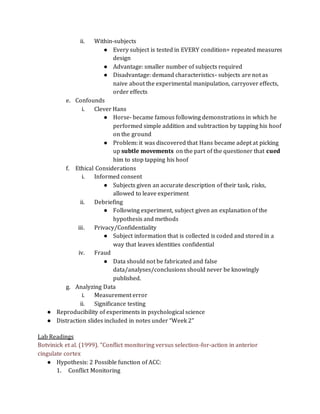
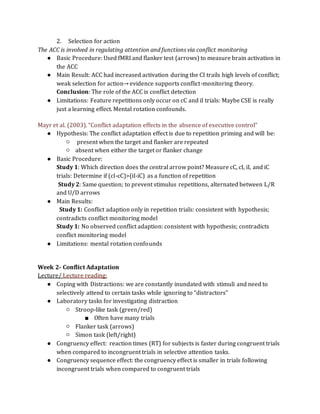
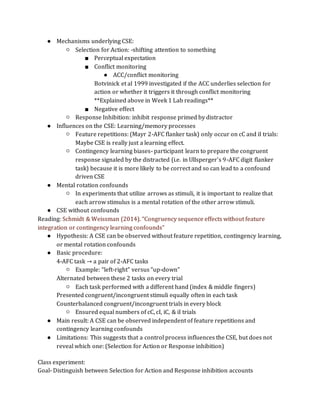
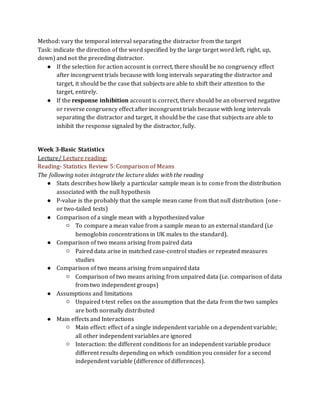

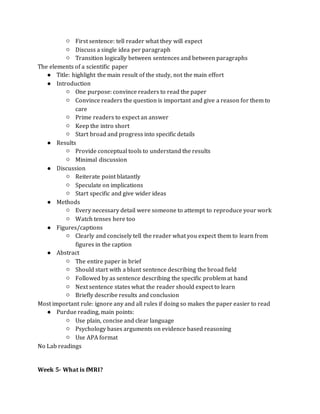
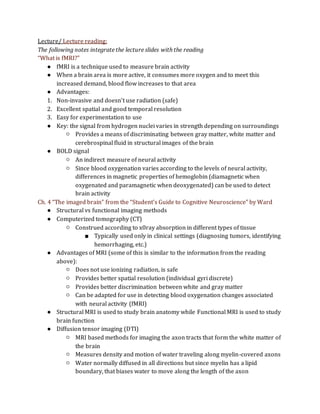

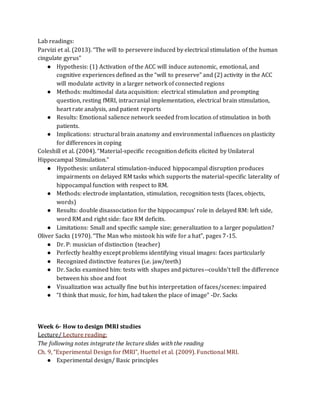
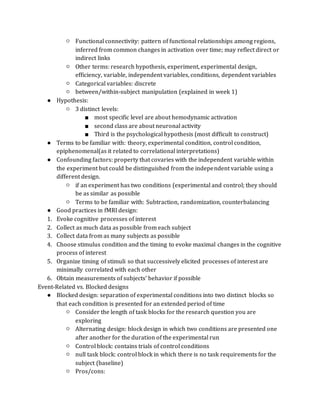
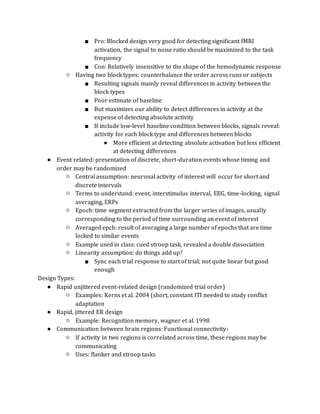
![Week 7- fMRI processing
Lecture/ Lecture reading:
The following notes integrate the lecture slides with the reading
Chapter 4, Preprocessing section (“Analyzing Data from Functional Imaging”, pp. 65-68).
Student’s Guide to Cog Neuroscience
Preprocessing: eliminates variability in the BOLD signal that is not due to the task
1. Slice Timing
Can be interleaved, ascending, or descending
SPM assumes each scan is instantaneous
● Data not collected at the same time but want to make it seem like we did so we
correct for this
● Only needed when temporal dynamics of BOLD responses are important and TR is
small enough to permit interpolation (TR< 3 second)
2. Realignment
● People move around in scanner (pitch, roll, yawn)
● Realignment adjusts for this
● There are ways to prevent movement of subjects, including reminding them!
3. Coregistration
● Brain activation (fMRI) data is aligned with a structural image
4. Normalization
● Wrap each subject’s brain to a template (average) brain
○ Basically nonlinear transformations to get all brains to “fit” in a standard
brain
5. Smoothing
● Still some variability left before doing this step
● Replace intensity value of a voxel with a weighted average of its original value plus
the value of neighboring voxels
○ [voxel: volume-based unit--in imaging research the brain is divided into may
thousands of these]
● Smoothing spreads the activity across voxels: some voxels may be enhanced
whereas others may be reduced
● Comes with the cost of spatial precision
○ Do not use if brain region is very small (1-2 voxels)!](https://image.slidesharecdn.com/makki-161218102539/85/Psych-302-Midterm-Study-Guide-13-320.jpg)